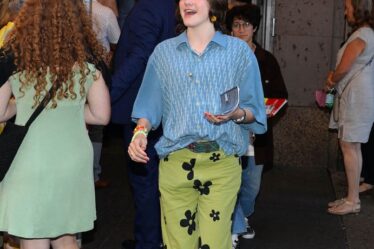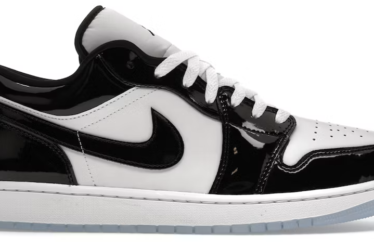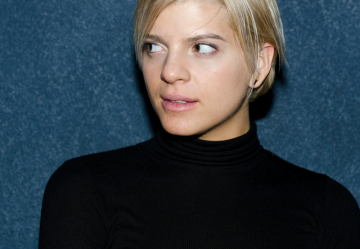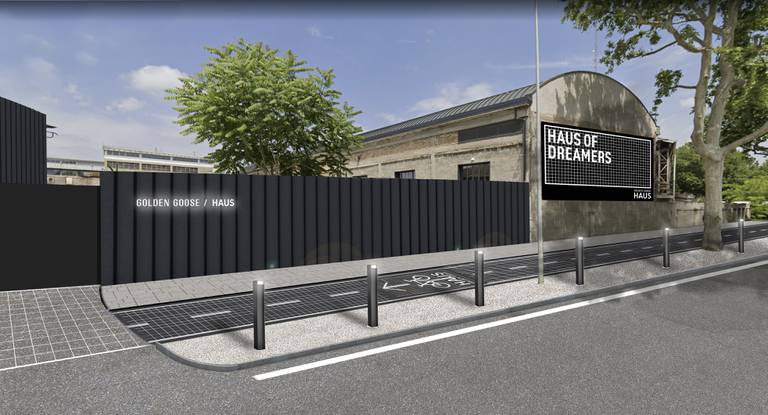
Golden Goose is set to become the latest luxury player to put culture at the heart of its brand strategy. Next week, the label known for its pre-distressed “Made in Italy” skate sneakers is set to inaugurate a sprawling new hub in Venice’s mainland industrial district of Marghera, which will include a school for craftsmanship and art, product development hub and space for exhibitions and events.
At a launch event May 22, the brand is also will roll out a new program of cross-cultural activations and collaborations: art installations and performances by singer and actress Suki Waterhouse, tattoo artist Brian Woo, activist Quannah Chasinghorse, architect Fabio Novembre and musician Sunmi will be revealed on the margins of the Venice Architecture Biennale, to be followed by special-edition co-signed products released throughout the year.
Golden Goose’s new push comes amid a broader shift in how luxury companies are activating their brands, reaching beyond fashion as they aim to expand their audiences and reposition themselves as wider “cultural” brands. This year, Moncler relaunched its “Genius” program of collaborations, swapping out niche designers for tie-ups with Mercedes-Benz, Alicia Keys and Pharrell Williams, who was also named menswear creative director at Louis Vuitton as part of a strategy to lean further into non-fashion activations.
“Culture is the new luxury,” chief executive officer Silvio Campara told BoF ahead of Golden Goose’s launch. The suite of activations across Venice (which will also include a Golden Goose-branded vaporetto between Marghera and the Biennale, activations at central venues like the Venice Venice Hotel, billboards and sponsored bike-share service) is designed to “help people discover art and discover what is Golden Goose.”
Campara is counting on a busy calendar of cultural events and collaborations to help fuel the Permira-owned brand’s next stage of growth after annual sales grew 30 percent to €501 million last year. Sales rose 20 percent in the first-quarter of 2023, the brand said Thursday.
Revamping its handbag offer — which is currently limited to a range of accessibly-priced camera bags — will likely be another growth opportunity for the coming seasons.
Cultural strategies have grown in importance in recent years for top luxury brands like Prada, whose sprawling art foundation in Milan and reputation for cutting-edge design (not to mention its mega-brand marketing budget) have given the label the credibility to forge partnerships with elite players in art, cinema and music. In 2021, Chanel started a book club and literary podcast (hosted by Monegasque royal Charlotte Casiraghi), while Louis Vuitton has pushed has pushed program of cross-cultural collabs to new heights with its Pharrell hire, star-studded tribute shows to Virgil Abloh, and a worldwide program of store installations and outdoor advertising to mark the latest chapter of its tie-up with Japanese sculptor Yayoi Kusama. Brands have also been ramping up their partnerships with sports, collaborating with Formula 1 teams and staging communications coups with top athletes.
Golden Goose is a different type and scale of brand, however: while the company has long flirted with a luxury positioning by celebrating its Venice roots and selling sneakers for €430 and up, it’s also largely steered away from presenting itself as exclusive or sophisticated. Its product assortment—which is focused on slight variations to its hero skate shoes—and brand platform marrying the manufacturing legacy of Venice, Italy with the skate scene of Venice Beach, California are both fabulously accessible and direct.
Does it make sense for a sneaker brand aimed at millennial and Gen-Z “paninari” in Italy and beyond to position itself as a broker of culture writ large?
The world does not need another fashion show.
According to Campara, it’s all in the execution, with Golden Goose planning to focus on creating creative activations that are approachable and relevant to local audiences, as much as they are prestigious. “It’s art for the people,” with creators who have clear values and aren’t afraid to be sentimental, Campara said. “All these people have something to tell you in a genuine way.”
Selections like LA-tattoo artist Briann “Dr.” Woo typify the strategy: he’s an established, reputable creative, but one whose audience nonetheless includes a strong contingent of spendthrift crypto-bros more interested in product-driven labels with tribal appeal like Rhude, Amiri (or perhaps now, Golden Goose) than in tracking the trends of fashion week runways.
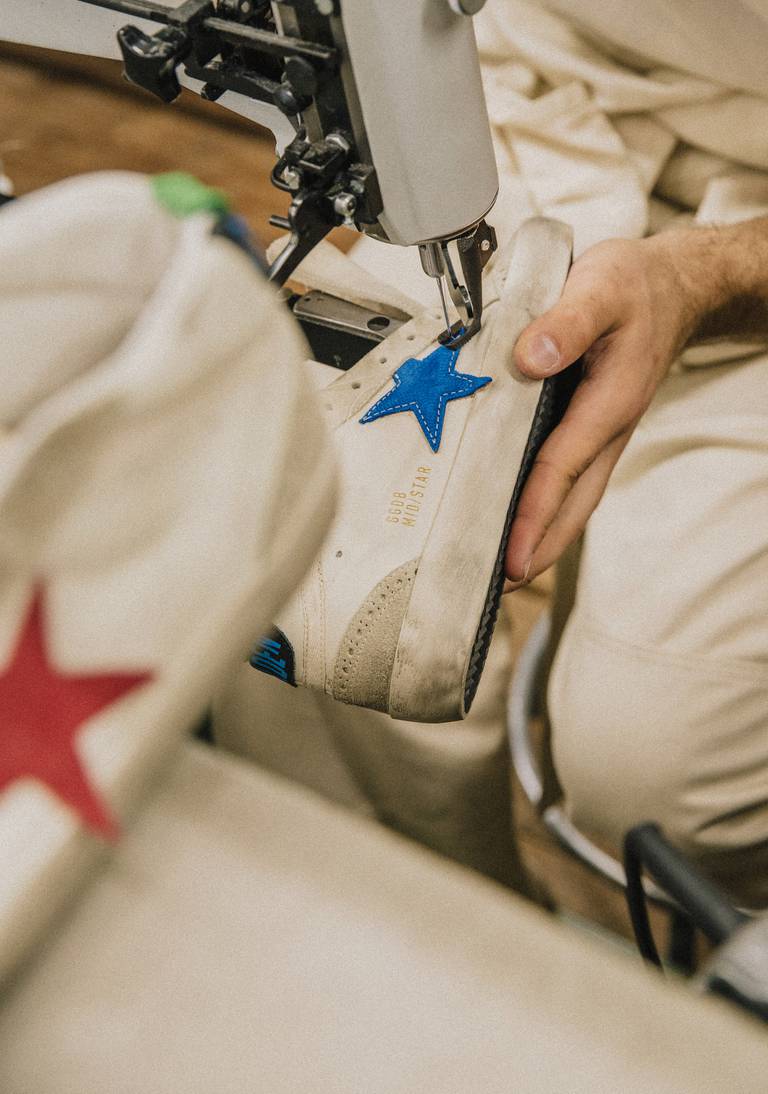
In addition to reaching new communities, the move could also help animate Golden Goose’s product lines and communications for existing customers. While Golden Goose’s strength has long been its laser-sharp focus on promoting hero products, the luxury industry’s broader refocus in recent seasons on telegraphing brand heritage and celebrating iconic items has left some in the market wondering what comes next. The collabs could help Golden Goose make its narrative more textured and dynamic, while staying true to its hallmark simplicity and side-stepping strategies like fashion week outings, where efforts by brands without enough robust cred among the fashion cognoscenti often fizzle.
“The world does not need another fashion show,” Campara said. But a tie-up with Dr. Woo? “Brian is the King of L.A. — he can legitimise us in a community that would not have approached Golden Goose before.”
Following the Venice launch, the brand is planning further rounds of large-scale collaborations and events in Paris and Milan.
Its Paris event, slated for October, will celebrate Golden Goose’ ties to skateboarding culture as well as staging activations with various artists and “makers” in shoemaking, gastronomy and upcycling. The aim is to engage Golden Goose’s existing base, while also exposing the brand to a wider circle of tastemakers: that “small niche with the power to legitimise a brand,” Campara says.

